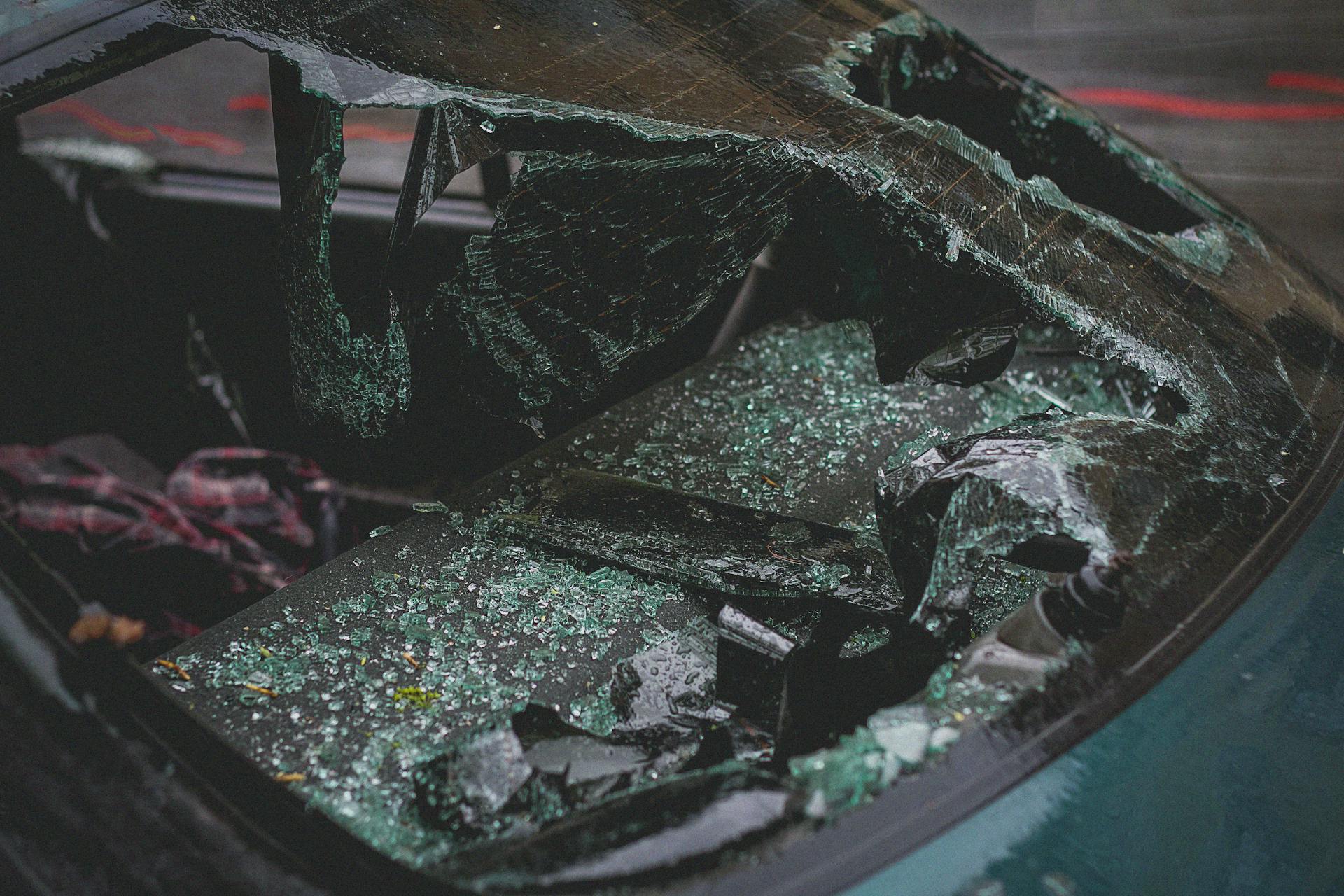
You have rights when dealing with Ohio auto insurance claims. In Ohio, insurance companies must provide a written explanation of the reason for denying a claim within 15 days of the request.
As an Ohio resident, you're entitled to a copy of your auto insurance policy, which must be provided by the insurance company within 30 days of a request. This includes information on coverage, limits, and deductibles.
Ohio law requires insurance companies to pay claims promptly, with some exceptions for disputes or investigations. If your insurance company is slow to pay a claim, you may be able to file a complaint with the Ohio Department of Insurance.
You can also dispute an insurance company's decision to deny a claim, and they must provide a written explanation for the denial.
Before Filing a Claim
Before filing a claim, it's essential to collect as much physical evidence and information as possible to support your statements. This can include a copy of the police report, which is often a crucial piece of evidence in determining fault and liability.
You should also gather the negligent driver's license, contact information, and auto insurance information. This will help you identify the responsible party and their insurance coverage.
Photos of the accident scene, property damage, and injuries are also vital in building a strong case. Video footage from cellphones, traffic cameras, or dashboard cameras can be even more compelling evidence.
Medical treatment invoices and receipts from mechanics estimating the cost of repair are also essential in calculating the total damages. If you're unable to collect this information at the time of the accident, a personal injury attorney may be able to recover it for you.
Here are some examples of the types of information you should collect:
- A copy of the police report
- The negligent driver's license, contact information, and auto insurance information
- Photos of the accident scene, property damage, and injuries
- Video footage that captured the accident
- Medical treatment invoices
- Receipts from mechanics estimating the cost of repair
- Salary information or a recent pay stub to prove your average weekly earnings
Keep in mind that certain elements can complicate a car accident case, such as hit-and-run cases or cases involving an uninsured or underinsured driver.
Claim Process
If your car is deemed a total loss, you'll need to file a claim with the at-fault driver's insurance company to receive a payout.
In Ohio, car insurance is fault-based, so the at-fault driver's insurance will pay for the damages in an accident.
To initiate the claim process, you'll need to provide documentation to the at-fault driver's insurance company, which may include photos, repair estimates, and police reports.
Carrying comprehensive or collision insurance can be a good option for recovering payment from your own insurance company instead of the other driver's in the event of a total loss.
Ohio drivers must carry at least $25,000 in property damage coverage, which will help cover the costs of repairs or replacement.
Damages and Compensation
You can recover various damages through a personal injury claim or lawsuit after a car accident in Ohio. These damages may include medical expenses, vehicle damage, and loss of income, including future income loss.
If you're dealing with insurance issues or worries about securing total compensation, consider consulting with a car accident attorney who can help you evaluate your case and establish liability. They can also assist in maximizing the damages you recover.
Some specific damages you may be able to recover include emotional and physical pain and suffering, reduced earning potential, emotional distress, diminished quality of life, permanent disability or physical disfigurement, and loss of consortium.
Here is a list of potential damages you may recover:
- Medical expenses
- Vehicle damage
- Loss of income, including future income loss
- Emotional and physical pain and suffering
- Reduced earning potential
- Emotional distress
- Diminished quality of life
- Permanent disability or physical disfigurement
- Loss of consortium
Damages Recoverable in a Claim
If you're involved in a car accident in Ohio, you may be eligible to recover various types of damages through a personal injury claim or lawsuit.
Medical expenses are a common type of damage that can be recovered, including costs for treatment, hospital stays, and rehabilitation.
Vehicle damage is another type of damage that can be recovered, which may include the cost of repairing or replacing your car.
Loss of income, including future income loss, can also be recovered, which can help you cover expenses if you're unable to work due to your injuries.
In addition to economic damages, you can also recover non-economic damages, such as emotional and physical pain and suffering.
Reduced earning potential and emotional distress are also types of non-economic damages that can be recovered.
Diminished quality of life and permanent disability or physical disfigurement are other non-economic damages that may be recoverable.
Loss of consortium is a type of non-economic damage that can be recovered, which may include the loss of companionship or relationship with a spouse or partner.
Here are some examples of damages that can be recovered in a car accident claim in Ohio:
Max Compensation with Legal Help
Receiving fair compensation after a car accident isn't as easy as it should be. If you're confronted with insurance issues or worries about securing total compensation, the right help can make all the difference.
Receiving fair compensation after a car accident requires a thorough evaluation of your case. Kisling, Nestico & Redick's experienced Ohio car accident attorneys will diligently evaluate your case, assist in establishing liability, and strive to maximize the damages you recover.
Your auto accident lawyer can fulfill several important duties to help you secure maximum compensation. Here are some of the key responsibilities they may take on:
- Identifying the at-fault driver or liable party in your case and if there is more than one liable party
- Retrieving information on your behalf, such as the crash report or video footage
- Reviewing relevant insurance policies to determine how much compensation you can pursue
- Contacting the other party’s insurance company and handling all communications to protect your interests
- Negotiating with the insurance adjuster to discuss settlement terms
- Advising you on when it may be appropriate to consider filing a lawsuit if negotiations are not successful
If your insurance claim comes to a standstill, your auto accident attorney can prepare a lawsuit on your behalf and pursue compensation at trial. Don't let insurance issues or worries about securing total compensation hold you back – seek help from experienced professionals like Kisling, Nestico & Redick.
Loss Compensation
In Ohio, you can recover compensation for various damages resulting from a car accident, including medical expenses, vehicle damage, and loss of income.
If you're involved in a car accident in Ohio, you may be able to pursue a personal injury claim or lawsuit to compensate for your economic and non-economic damages. These damages can include medical expenses, vehicle damage, loss of income, emotional pain and suffering, and more.
The types of damages you can recover in Ohio are extensive, including emotional distress, diminished quality of life, permanent disability, and loss of consortium.
Here's a breakdown of the different types of damages you can recover in Ohio:
- Medical expenses
- Vehicle damage
- Loss of income, including future income loss
- Emotional and physical pain and suffering
- Reduced earning potential
- Emotional distress
- Diminished quality of life
- Permanent disability or physical disfigurement
- Loss of consortium
In Ohio, if your car is declared a total loss, you'll receive the actual cash value (ACV) of the vehicle, but you may not receive the listed value on websites like Kelley Blue Book or J.D. Power's NADAguides.
Keep in mind that if you still owe payments on your car or leased it, the payout will go to the financer or leasing company, leaving you responsible for any additional balance not covered.
Frequently Asked Questions
Is Ohio a no-fault state for auto accidents?
Ohio is not a no-fault state, instead using the at-fault doctrine to determine liability for damages. Learn more about how Ohio's auto accident laws work.
What is the rule 3901 in Ohio?
In Ohio, Rule 3901 regulates the investigation and settlement of property and casualty insurance claims to ensure fair treatment of residents. This rule sets uniform standards for insurance companies handling claims in the state.
What is the law for accident reporting in Ohio?
In Ohio, accidents resulting in injury, death, or over $1,000 in property damage must be reported to the police immediately. If an uninsured driver is involved, you have six months to file a crash report with the BMV.
Sources
- https://www.johnfitch.com/faqs/how-do-i-file-a-car-accident-claim-in-ohio/
- https://www.galvezinsurance.com/how-to-handle-car-accident-on-private-property-in-ohio/
- https://www.knrlegal.com/ohio-car-crash-laws-whose-insurance-pays/
- https://www.knrlegal.com/what-is-total-loss-after-a-car-insurance-claim-in-ohio/
- https://www.amourgis.com/car-accident-lawyer/accident-laws/
Featured Images: pexels.com


